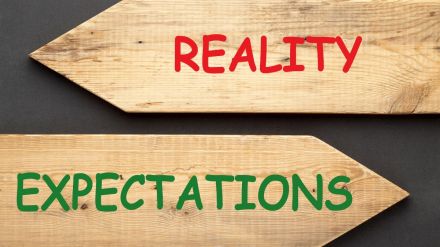By Sanjeev Sanyal & Partha Protim Barman
Policymakers and media diligently keep track of the current inflation rate, but it is often forgotten that it also matters what consumers expect of future inflation. Since the introduction of the flexible inflation targeting framework in 2016, inflation has come down structurally. However, inflation expectations have not declined commensurately. For instance, consumer price inflation fell to 0.25% year-on-year in October, but the latest Reserve Bank of India (RBI) expectations survey (September 2025) suggests that consumers think it is running at 7.4% and that it will be 8.7% in a year’s time. Even if some critics feel that statistical factors have exaggerated the dip in inflation in October, it is fair to say that consumers are far more pessimistic than warranted by data. In this article, we will explore why the gap between expectation and actual inflation has significant economic cost.
The RBI’s Inflation Expectations Survey of Households provides the best available gauge of what consumers think about price trends. The accompanying chart shows how expectations have moved vis-à-vis actual consumer price inflation. Between 2009 and 2013, inflation was high and volatile, peaking at 15% in December 2009. In response, consumer estimates of inflation as well as their expectations of future inflation rose sharply. This is to be expected, but notice that expectations remained obstinately high even as actuals declined to the 9-10% range in 2010-2013.
Subsequently, when inflation dropped to around 5% in 2014-2016, expectations also declined but not as much as actual readings. For instance, one-year ahead expectations declined by 500 basis points (bps) from 16% in September 2014 to 9% in December 2024, but expectations were still 450 bps higher than actual inflation!
The adoption of flexible inflation targeting in 2016 marks a watershed moment. A Monetary Policy Committee was constituted and given the explicit target of keeping consumer price inflation in the 2-6% range. Although inflation had already cooled by the time the framework was introduced, it provided an explicit target range for the first time. One of the goals for articulating a target range was to anchor inflation expectations. This is important because expectations impact a range of economic variables such as wage demands from workers, real returns from savers, real lending rates of financial institutions, and so on. Expectations of inflation also impact how policymakers make fiscal decisions and manage the economy. All this feeds back into future inflation and other macro-stability indicators of the economy. This is why anchoring inflation expectations is crucial.
Consumer price inflation has broadly remained within the 2-6% range since inflation targeting was introduced. Even if it has occasionally gone outside the range (in both directions), it has so far always drifted back to the target range. One would then think that inflation expectations would have also been anchored in this range but this has not happened. As shown in the chart, the divergence is still huge—about 400 bps on average and sometimes over 700 bps. At the time of writing, the gap between actual and perceived inflation is around 700 bps and that with one-year forward expectations is over 800bps!
It is unclear why inflation expectations are so sticky but it is not because consumers have been good at predicting future trends. In September 2024, for example, consumers expected inflation at 10% in September 2025, but actual inflation is merely 1.5%. It is also not the case that consumers are entirely unaware of trends in inflation. As the inflation rate declined, expectations also declined but just not by the same magnitude. So, what explains inflation pessimism?
The details of the RBI survey suggest that demographics may play some role in the divergence: young people (up to 25 years) tend to expect inflation to be lower as compared to older people (more than 60 years). Roughly speaking, inflation expectations of the young are usually 75-100 bps below that of the elderly. Older people with lived experiences of volatile and high inflation eras are perhaps more pessimistic than young people with more recent inflation experience. Still, this does not explain most of the gap.
Another reason may be that the methodologies used to measure inflation are flawed. We agree that India’s consumer price index is outdated and needs to be brought in line with today’s consumption basket. However, our analysis found it difficult to explain much of the large and persistent gap based on this. Flaws in the design of the RBI’s expectations survey may be a better explanation although it is difficult to put a number to it. Perhaps perennially negative media reports and social media conversations on prices influence expectation since price spikes attract attention but not declines.
Whatever the real reason for the actual inflation and consumer expectations, the gap comes at a price. For example, the real cost of capital remains stubbornly high in India despite significant improvements in the quality of financial institutions and in the availability of domestic capital. Administered rates on various savings schemes remain high. Currently, India’s inflation rate of 0.25% is much lower than that of the UK and USA at 3.8% and 3% respectively. Yet, India’s 10-year government bond yield stands at 6.5% against about 4.4% in the UK and 4.1 % in the US. If India’s yield curve closed the gap with the UK (not unreasonable given relative economic fundamentals), it would lower the cost of capital by 200 bps for not just the government but also industry and consumers.
Sanjeev Sanyal & Partha Protim Barman are respectively member and young professional of the economic advisory council to Prime Minister.
Disclaimer: Views expressed are personal and do not reflect the official position or policy of FinancialExpress.com. Reproducing this content without permission is prohibited.
